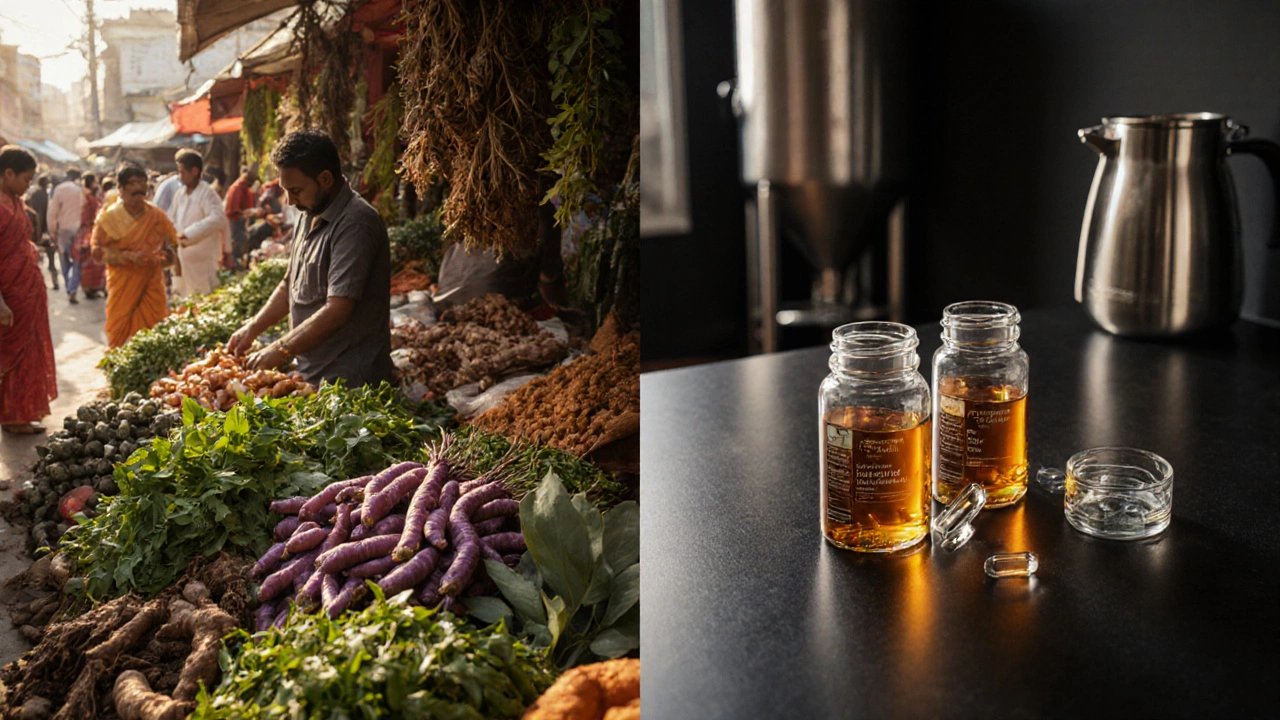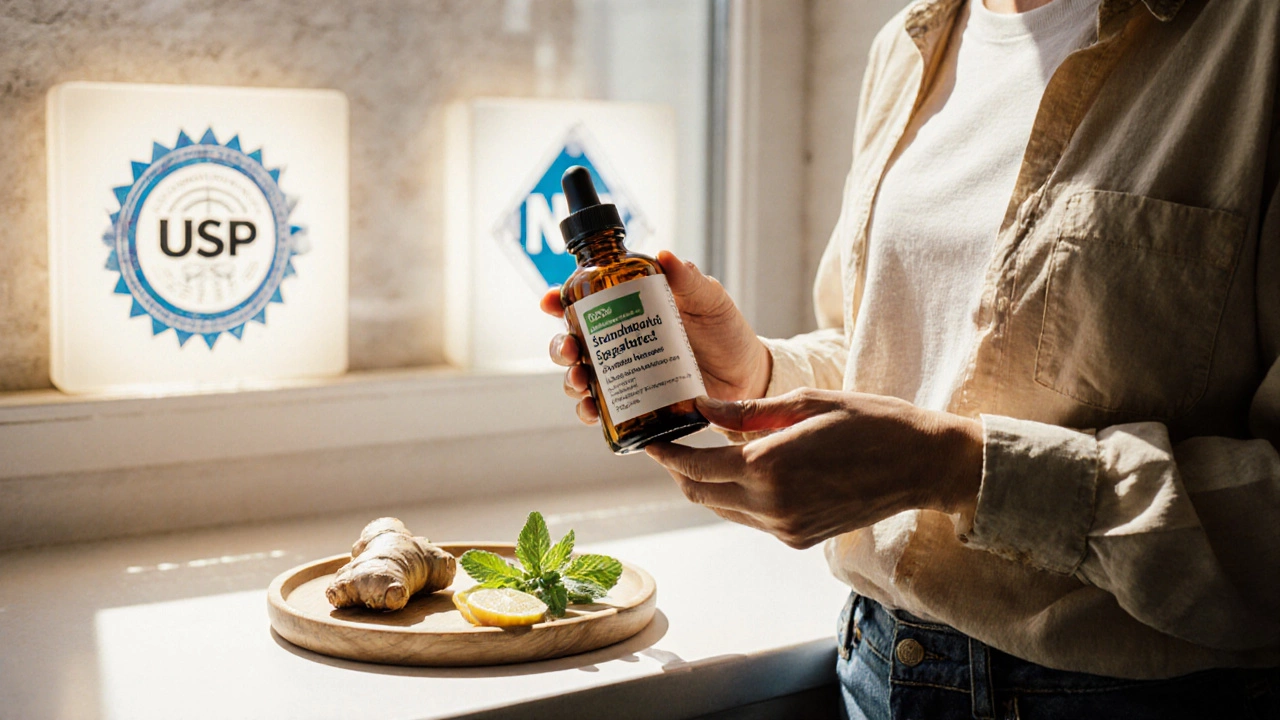
- Oct, 16 2025
- 0
When people talk about herbal health supplements is a category of dietary supplements derived from plant extracts, herbs, or botanicals intended to support various aspects of health, the conversation often jumps from ancient folk remedies to modern wellness trends.
Understanding what these products actually are, how they’re made, and what to watch out for can save you from wasted money and potential side‑effects. Below you’ll find a step‑by‑step guide that covers everything from the science behind the herbs to practical tips for picking a safe, effective product.
What Makes a Supplement "Herbal"?
At its core, a herbal supplement contains bioactive compounds that originate from plant material-leaves, roots, bark, or seeds. Unlike pharmaceutical drugs, which are usually single‑molecule chemicals, herbal supplements often contain a mixture of phytochemicals, each contributing to the overall effect.
Key terms you’ll see on labels:
- Extract: A concentrated form where the active constituents are pulled out using water, alcohol, or other solvents.
- Standardized: The extract is adjusted to contain a specific percentage of a marker compound (e.g., 95% curcumin in turmeric).
- Whole‑herb: The plant material is dried and powdered without concentration.
How Herbal Supplements Are Produced
Manufacturing involves several stages that affect potency and safety:
- Harvesting: Quality starts in the field. Soil health, climate, and harvest timing influence the levels of active compounds.
- Drying & Grinding: Proper drying prevents mold, while uniform grinding ensures consistent extraction.
- Extraction: Solvents like ethanol or supercritical CO₂ pull out phytochemicals. The choice of solvent determines which compounds are captured.
- Standardization: Labs measure marker compounds (e.g., allicin in garlic) and adjust the blend to meet a declared potency.
- Encapsulation / Tableting: The final powder is packed into capsules, tablets, or powders for consumer use.
Common Categories of Herbal Supplements
Herbal products can be grouped by the health goal they target:
- Adaptogen is a plant that helps the body resist stress and maintain balance (e.g., ashwagandha, rhodiola).
- Anti‑inflammatory agents (e.g., turmeric, boswellia).
- Immune boosters (e.g., Echinacea is a North American herb traditionally used to support immune function).
- Digestive aids (e.g., ginger, peppermint).
- Mood enhancers (e.g., St. John's Wort is a flowering plant used for mild‑to‑moderate depression).
Popular Herbs and Their Evidence‑Based Benefits
| Herb | Active Phytochemicals | Primary Benefit (Evidence) | Typical Dose |
|---|---|---|---|
| Turmeric | Curcumin | Anti‑inflammatory; joint comfort (clinical trials show ~30% pain reduction) | 500‑1000mg standardized extract (95% curcumin) |
| Ginseng | Ginsenosides | Energy boost; cognitive support (meta‑analysis shows modest improvement in memory tests) | 200‑400mg extract |
| Ashwagandha | Withanolides | Stress reduction; cortisol lowering (studies report 20% drop in cortisol) | 300‑600mg extract (5% withanolides) |
| Echinacea | Echinacoside, alkamides | Short‑term immune support (reduces cold duration by ~1‑2 days) | 300‑500mg extract |
| St. John's Wort | Hypericin, hyperforin | Mild‑to‑moderate depression (comparable to SSRIs in some trials) | 300‑900mg standardized extract |

Safety, Regulation, and Quality Assurance
Unlike prescription drugs, herbal supplements are regulated as foods in many jurisdictions, meaning manufacturers are not required to prove efficacy before market entry. However, some agencies provide oversight:
- U.S. FDA: Monitors adverse event reports and can issue warnings, but does not pre‑approve supplements.
- Health Canada: Requires a Natural Health Product (NHP) licence with evidence of safety and efficacy.
- Therapeutic Goods Administration (TGA) in Australia mandates that manufacturers meet Good Manufacturing Practices (GMP) and list ingredients accurately.
When choosing a product, look for certifications such as USP, NSF, or ConsumerLab that independently test for purity and potency.
How to Pick a High‑Quality Herbal Supplement
- Check the label for standardized extracts. This tells you exactly how much of the active compound you’re getting.
- Verify third‑party testing. Look for logos from USP, NSF, or similar bodies.
- Read the ingredient list. Avoid added fillers like rice starch, artificial colors, or excessive sugars.
- Consider the source. Herbs grown in certified organic farms reduce pesticide residue risk.
- Beware of bold health claims. If a product promises to cure disease, it’s likely a scam.
For a quick sanity check, use this cheat‑sheet:
| Criterion | What to Look For |
|---|---|
| Standardization | e.g., 95% curcumin |
| Third‑party testing | USP, NSF, ConsumerLab badge |
| Transparent sourcing | Country of origin, organic cert. |
| Clear dosing instructions | mg per serving, frequency |
| Absence of extreme claims | No “cures cancer” language |
Potential Interactions and Contraindications
Herbal supplements can interact with prescription meds, especially those metabolized by the liver enzyme CYP3A4. Notable examples:
- St. John's Wort can reduce the effectiveness of birth control pills, antidepressants, and blood thinners.
- Ginkgo biloba may increase bleeding risk when taken with anticoagulants.
- Turmeric at high doses can interfere with diabetes medications by lowering blood sugar further.
Always discuss new supplements with a healthcare professional, particularly if you have chronic conditions or are pregnant.

Herbal vs. Synthetic Supplements: A Quick Comparison
| Aspect | Herbal Supplements | Synthetic Supplements |
|---|---|---|
| Source | Plant extracts, whole herbs | Lab‑manufactured chemicals |
| Typical Bioavailability | Varies; often enhanced by natural oils | Often higher due to pure compound |
| Regulation | Food‑grade, limited pre‑approval | Often stricter for pharmaceuticals |
| Side‑effect profile | Complex mix can cause interactions | Usually single‑target, predictable |
| Cost | Generally moderate; premium for organic | Often cheaper for bulk production |
Bottom Line
Herbal health supplements can be a valuable addition to a balanced diet when you choose products that are standardized, third‑party tested, and transparently sourced. herbal supplements aren’t magic pills, but they do offer scientifically backed benefits for immunity, inflammation, stress, and mood. Keep an eye on dosages, watch for drug interactions, and treat them as complementary-not a replacement for prescribed medication.
Frequently Asked Questions
Are herbal supplements safe for everyone?
Safety depends on age, health status, and existing medications. While many herbs are well‑tolerated, pregnant women, children, and people on blood thinners should be especially cautious and consult a doctor.
How long does it take to feel the effects?
It varies by herb and purpose. Adaptogens like ashwagandha may show stress‑reduction benefits after 2‑4 weeks, while immune boosters such as echinacea can act within days during a cold.
Do I need to cycle herbal supplements?
Some herbs, especially potent adaptogens, are best cycled (e.g., 4 weeks on, 2 weeks off) to prevent tolerance. Always follow manufacturer guidelines.
Can I take multiple herbal supplements together?
Combining herbs is common in traditional formulas, but mixing too many standardized extracts can increase interaction risk. Stick to a simple regimen unless advised by a qualified practitioner.
How do I know if a supplement is high quality?
Look for standardized extracts, third‑party testing marks (USP, NSF), clear dosage info, and transparent sourcing. Avoid products with vague “herbal blend” claims and excessive filler ingredients.
Nikhil Verma
I'm a dedicated physician with a passion for exploring the intricacies of medicine, focusing on the unique healthcare challenges in India. I spend much of my spare time writing articles aimed at improving public understanding of health issues. Balancing my clinical practice and writing allows me to reach a wider audience, sharing insights and fostering a deeper appreciation for medical advancements. I derive immense satisfaction from both treating patients and engaging with readers through my writing.